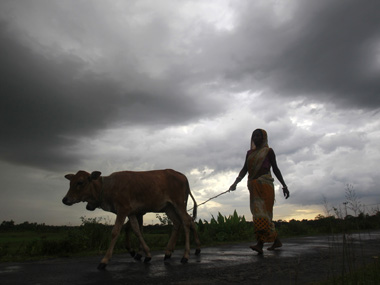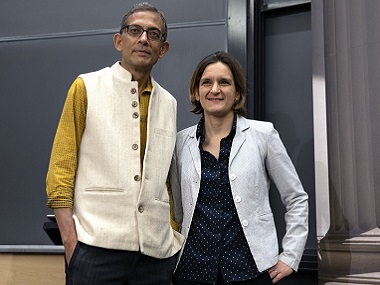Interestingly, around the time that finance minister Arun Jaitley released the provisional data of the rural socio-economic caste census (SECC) 2011, less than 10 km away, a round table on direct benefit and basic income transfers was debating the knotty issue of identification of beneficiaries of welfare programmes – how does one know that a dole is not going to a rich person instead of a poor person.
Several participants at the round table - organised by the United Nations Development Programme (UNDP) and the International Centre for Human Development – felt that the SECC survey (initiated by the United Progressive Alliance government) would be the answer to this problem. Rural development minister Birendra Singh said much the same thing. “The data is an opportunity to make evidence-based selection, prioritisation and targeting of beneficiaries in different programmes,” he is quoted as having said, while the report was being released.
The data has value at both the macro and micro levels.
At the macro level, it gives a broad picture of the extent of deprivation at the national level. So we now know that that of the 17.91 crore rural households, 16.50 lakh are the wretched of the earth since they fall in one of the following categories – they don’t have shelter, they live on alms, they are engaged in manual scavenging, have been released from bonded labour or belong to primitive tribal groups (this is the automatically included category). Or that 8.69 crore households fulfil one of the seven criteria for deprivation – the condition of their house, no adult member in the working age group, female headed household with no male member in the 16-59 age group, no literate adult above 25 years, SC/ST households, landless households deriving a major part of their income from manual labour. So policy making becomes much more in tune with ground reality and is not based on rough estimates or political considerations.
As this piece by R. Jagannathan points out, by showing that the majority of rural households are engaged in manual casual labour and do not derive the bulk of their income from land, the data knocks the bottom out of the high-pitched opposition to the land acquisition law.
A now-retired senior bureaucrat of the erstwhile Planning Commission, who was in the thick of the debates on the National Food Security Act (NFSA), recalls how the figure of 75 per cent coverage of rural population was arrived at more through political bargaining than any data-based evidence. If SECC data had been available then, the figure may have been more realistic.
But the real value of the data is at the micro level, since it enables the tracking of the socio-economic status of individual households. The lists for each state go down to the level of locality and house number and give details of name of family members and details of date of birth, occupation, level of education, kind of house, ownership of selected gadgets, among other things. This should enable a very, very focused targeting of welfare benefits. Households that fulfill any of the 14 exclusion criteria cannot lay claim to, say, a below poverty line (BPL) card.
A senior state government official at the round table was extremely gung-ho about how this data could be seeded with other data that a state or local government has to double check information. With the help of technology, she said, this will help weed out cases where people were wrongly cornering benefits of welfare programmes that they were clearly not entitled to.
While this is a possibility, will it happen? Not everyone is sure about this.
N. C. Saxena, former secretary Planning Commission and member of the erstwhile National Advisory Council, has serious reservations about the census-based methodology adopted in the SECC. In the case of a population census, he notes, people have no interest in hiding information or giving wrong information. But when people know a survey is being done to determine eligibility for welfare benefits, they have a vested interest in doctoring the information they give. While it will be difficult to give false information on the quality of a house or ownership of a refrigerator, information about income, ownership of vehicles or payment of taxes can be, and these cannot be verified.
Saxena feels it would have been better if the exercise had been done in a gram sabha or panchayat meeting where someone giving false information would have been called out by others in the village. He had suggested this method be adopted, but this recommendation had been ignored. Of course, whether this would be possible in the highly rigid hierarchical structures of a village is a moot point. Can a landless scheduled caste person stand up in a village panchayat and say that a powerful upper caste person is lying about his economic status?
Chairman of the National Statistical Commission Pronab Sen is a bit doubtful about a certain number of identified deprivations being used as criteria for exclusion or inclusion. Two household with the same number of deprivations may be different in other respects; one can have a lot of other advantages which are not captured in a deprivation-based measurement, he points out.
Can the SECC data put an end to political bargaining over inclusion and exclusion criteria? That is unlikely, says Sen, since the automatically included category is too small – 0.92 per cent of rural households. So this will mean bringing in households fulfilling any of the seven deprivation criteria. Politics will come into play in deciding how many – and which - of the seven deprivation criteria will be used to determine eligibility.
More importantly he is not sure if the detailed data alone will help root out corruption and non-eligible people cornering benefits while the eligible are left out. There could still be scope for corruption and political interference in, say, the issue of BPL card. What this will need, he says, is a huge improvement in governance standards and vigilance on the part of both authorities as well as the community.
The SECC 2011 provisional data may not be the panacea it is being made out to be, but it definitely is a welcome first step to data-driven policy making and better targeting of welfare schemes. It’s now time to focus on the governance issues to weed out corruption.


)




)
)
)
)
)
)
)
)